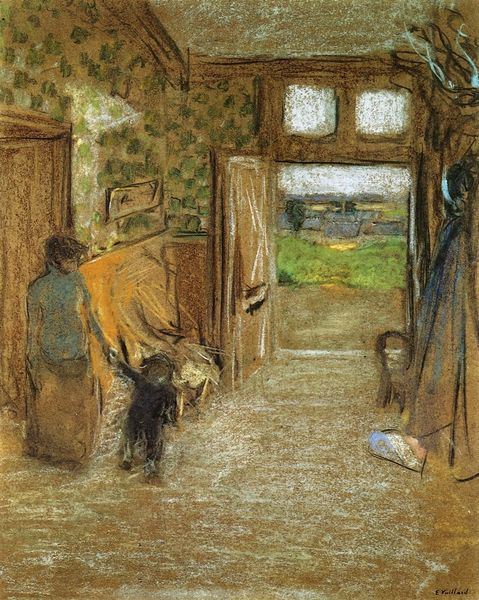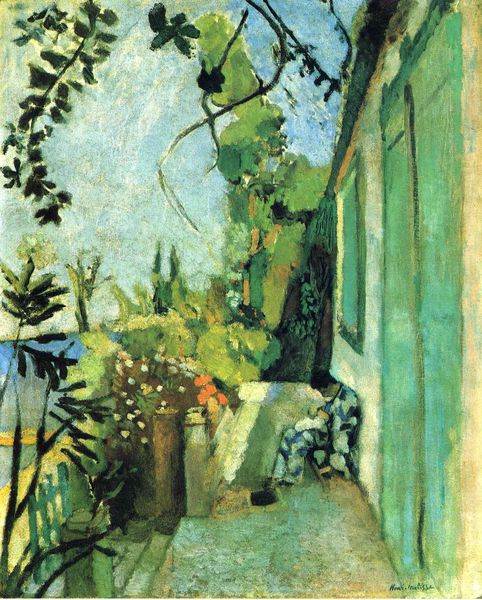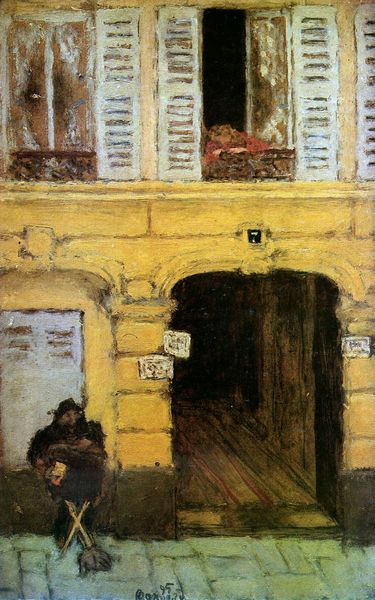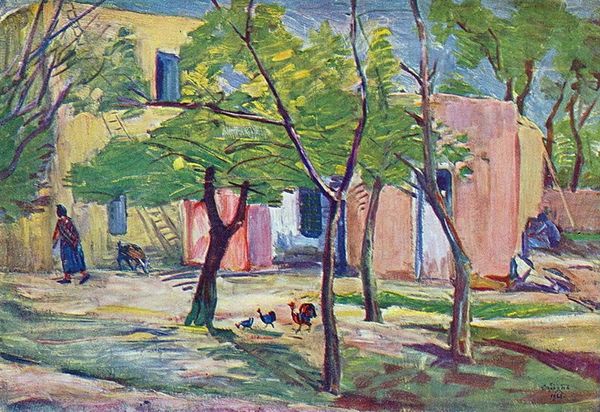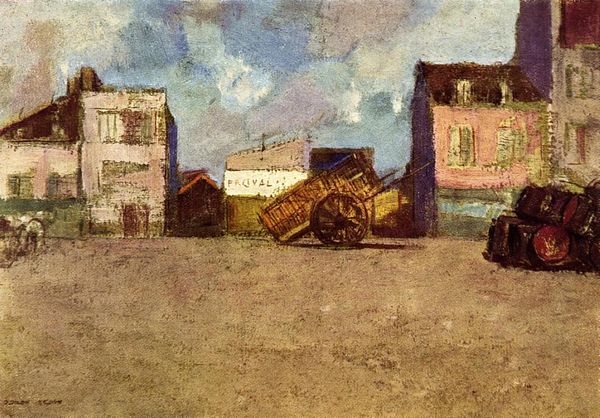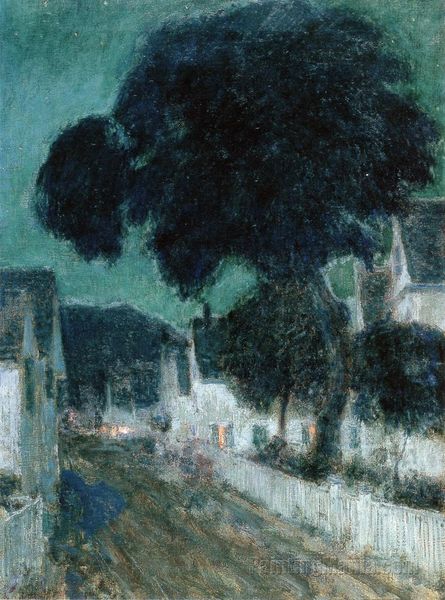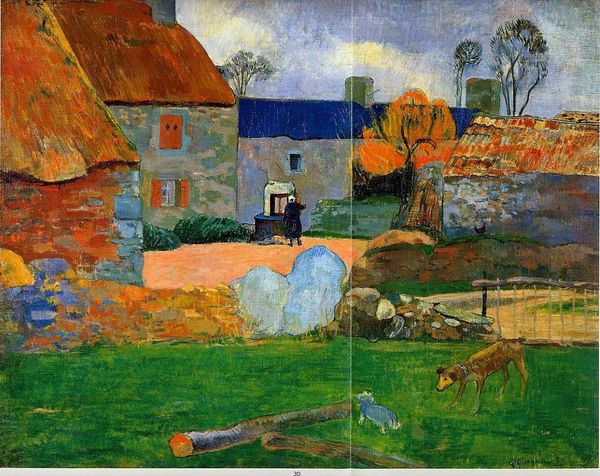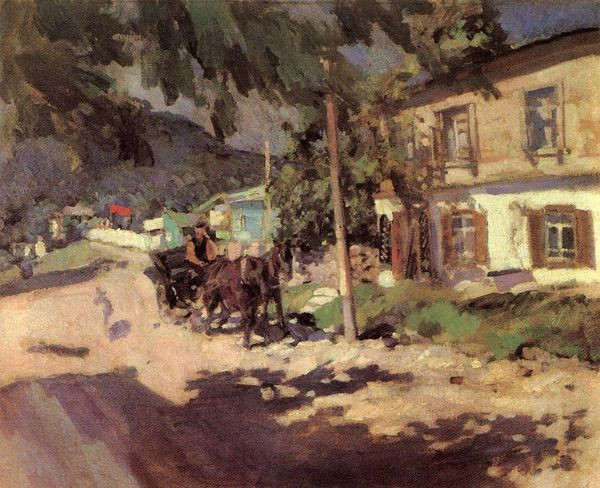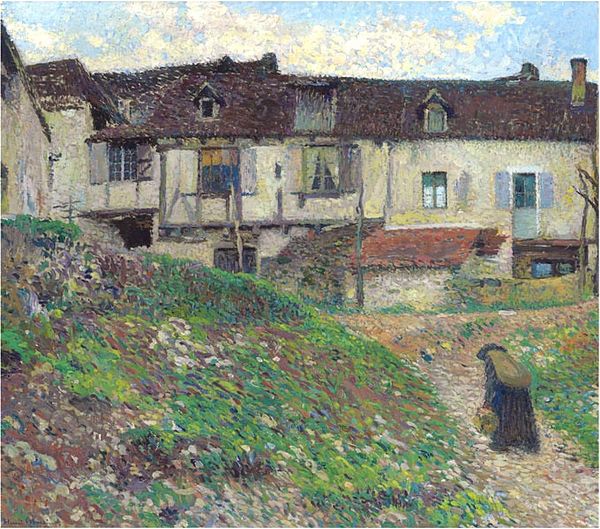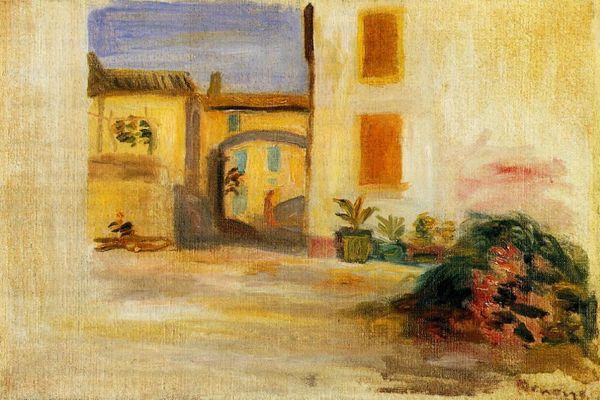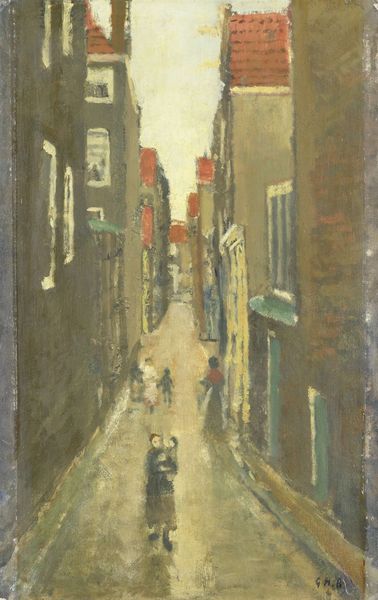
Dimensions: 37 x 27 cm
Copyright: Public domain
Curator: Looking at this painting by Pierre Bonnard, likely created in 1893, titled "Street in Eragny-sur-Oise," also known as "Dogs in Eragny," I immediately feel a sense of stillness, even anonymity. The color palette is so subdued, almost bleached, which adds to this feeling. Editor: I see it too, but I would go a bit further: to me, it appears to emanate an almost haunted atmosphere. I’m getting a strong impression that the scene is about more than just capturing daily life. Curator: Right. Bonnard was working within a milieu saturated with symbolist ideas. The commonplace—street scenes, domestic interiors, quotidian life—became a canvas for inner psychological experience. Notice how the almost monochromatic tone reduces the scene to an abstracted, nearly dreamlike impression. The buildings and ground seem to bleed together. Editor: The two small dogs, though... Their presence, I would argue, shifts the dynamics significantly. Are they guardians? Are they omens? The title hints at their importance. The very fact that this painting has two titles makes me suspect there is more than one way to read it. What could this seemingly candid street scene possibly conceal? Curator: It conceals the invisible architecture of perception! What do we focus on? What do we overlook? How do these painted surfaces relate to our internal states of being? Note how the architecture is softened into pure form by these post-impressionistic brushstrokes. It invites us into a space between material and spiritual reality. And while dogs frequently appear in paintings of this period, signaling domesticity or faithfulness, these dogs almost melt into the very fabric of Eragny-sur-Oise. Editor: Given Eragny’s history as an anarchist center with figures like Pissarro residing there, and Bonnard’s own engagement with politically radical artistic groups, could these dogs also function as stand-ins for a neglected, unseen populace—or perhaps the ever-watchful eye of a repressive state? Curator: That's a fascinating socio-political layer to consider, indeed. Bonnard would have been extremely aware of such tensions. Editor: Exactly. I find it fascinating that even a painting of such a mundane subject can hold a reflection of larger social anxieties when examined through that particular lens. Curator: Thank you. It’s helpful to bring these tensions to the forefront in considering this artist. I will never look at Bonnard in the same way. Editor: Likewise, it's rewarding to consider how a simple street scene can symbolize a richer, layered history—the painter's individual consciousness, and our larger society's.
Comments
No comments
Be the first to comment and join the conversation on the ultimate creative platform.

